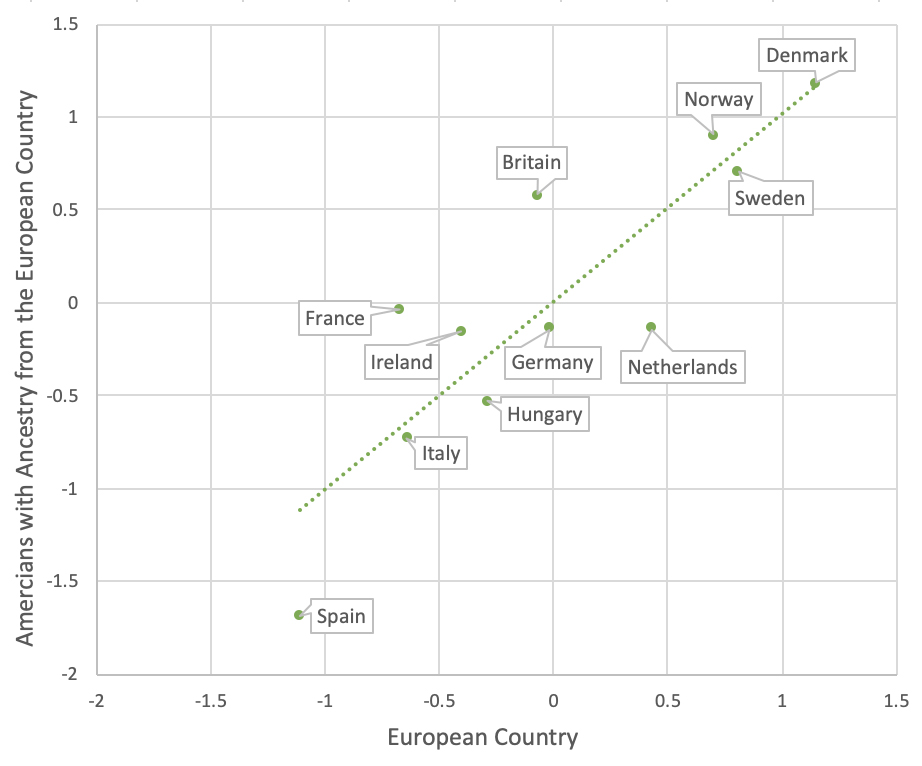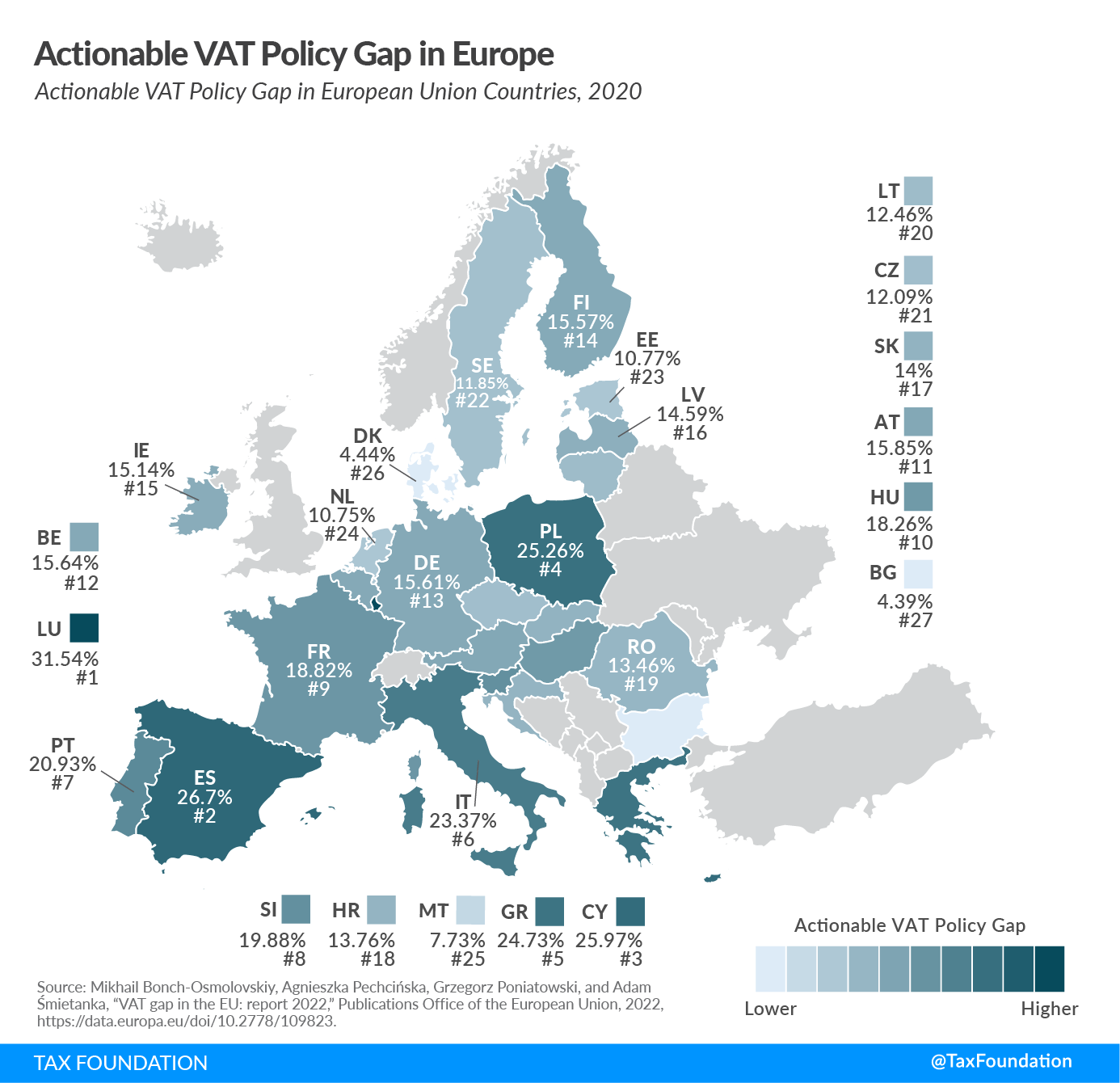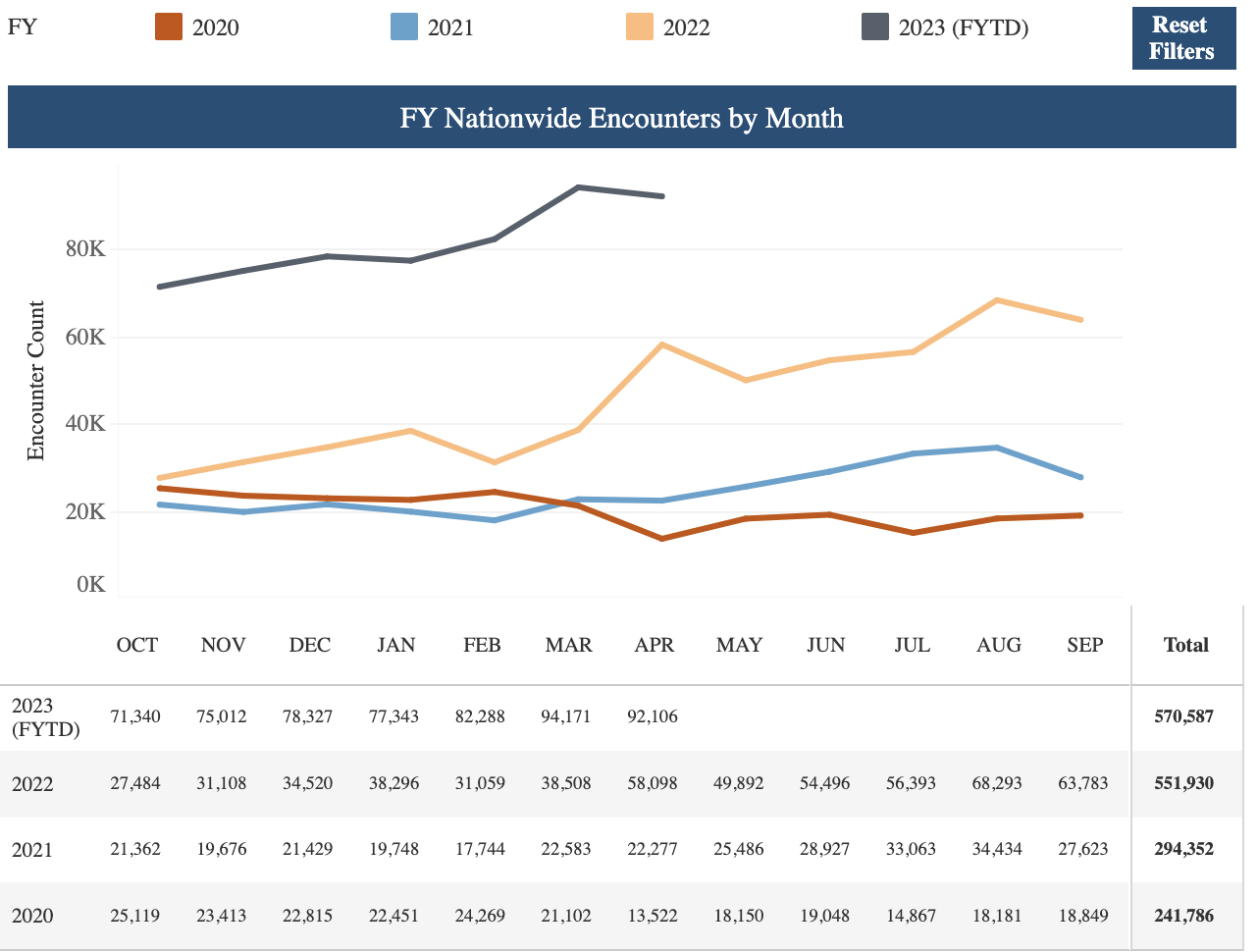More Evidence for Cultural Persistence
George Mason University economist Garett Jones recently published The Culture Transplant, a book that has major implications for immigration policy.1 His thesis is straightforward: Immigrants bring with them distinctive values and behaviors from the Old Country that they transmit to their descendants, who then perpetuate them in their new country. This cultural “transplant” contradicts claims that immigrants to the U.S. will cause little or no change to the social fabric. In fact, past immigration has already reshaped our society, and today’s immigration will cause further changes that persist long into the future.
Since its author is an economist, The Culture Transplant focuses mainly on research findings from the economics literature. However, studies by historians, political scientists, and sociologists also provide evidence for cultural persistence. I cited some of these non-economic studies in a speech last September (linked at the end of this article), and here I provide more detail.
Surprising Differences Among Similar Groups
One of the most famous histories of cultural persistence is Albion’s Seed, which chronicles how four groups of British settlers in North America established distinctive cultures that persist in some form to the present day.2 The author, David Hackett Fischer, contrasts Puritans in New England, Quakers in the mid-Atlantic region, distressed Cavaliers in the upper South, and “Scotch-Irish” borderers in Appalachia. Fischer describes how these groups had different conceptions of order, power, and freedom that shaped their approaches to education, civics, trust, crime, and government structure. He then shows that the regions of the U.S. in which each group settled still exhibit these cultural differences today.
Cultural persistence is not limited to America’s founding peoples. In a classic study for the Journal of Politics, political scientists Tom Rice and Jan Feldman argue that later immigrant groups brought their own civic values that are still detectable in their descendants more than 100 years later.3 The study’s authors first created an index of civic culture — based on questions related to social trust, tolerance, and community engagement — and then measured the strength of civic culture in both Europe and the U.S. The correlation that emerged between European American groups and their ancestral countries is remarkable:
Figure 1. Civic Culture in
|
|
Source: Rice and Feldman, “Civic Culture and Democracy from Europe to America”. The axes display a standardized (“z-score”) measure of the strength of civic culture. |
In Europe, represented on the horizontal axis of Figure 1, Denmark has a more civic culture than Britain, which in turn has a more civic culture than Italy. In the U.S., represented on the y-axis, the same order emerges — Danish-Americans are more civic than British-Americans, who are more civic than Italian-Americans. There should be no such relationship if the U.S. were truly a “melting pot” where distinctive cultures disappear.
A follow-up study in the Journal of Cross-Cultural Psychology examined survey respondents’ subjective well-being instead of their civic culture.4 It generated results similar to Figure 1, with the well-being of Europeans strongly correlated with the well-being of their co-ethnics in the U.S. The relationship survived controls for other factors related to well-being, such as education and marital status.
Evidence of ethno-cultural differences exists even in some of the most apparently homogeneous parts of the U.S. A study appearing in Social Science Quarterly used data from the Rural Development Initiative and the 1990 census to measure community attachment in small Iowa towns.5 Although predominantly German-American, these towns varied in their mixtures of other European ancestry groups, such as Dutch, English, and Irish. Comparing across towns, the authors found that more diversity of these seemingly similar ancestral groups was associated with lower levels of community attachment.
Although not about ancestral groups per se, another study finds that the relative level of civic engagement across U.S. states has been remarkably consistent over time.6 In other words, the most civically oriented states in the 1990s, such as New Hampshire and Minnesota, tended to also be the most civically oriented in the 1930s and even the 1880s. The least civic states, such as Louisiana and Mississippi, generally remained that way over the same time period. Furthermore, in a finding that previews a theme of The Culture Transplant, the authors show that past levels of civic culture within a state are strong predictors of its socioeconomic development in the present.
Given how much migration the U.S. has experienced since the 1880s, both internal and from abroad, cultural persistence across states might appear to demonstrate a localized acculturation of newcomers. Alternatively, the state-to-state continuity could primarily reflect the presence of core ancestral groups that have changed relatively little in the parts of the country that exhibit the highest (New England) and lowest (Southeast) civic engagement. The evidence points more toward this second explanation. For example, sociologist Cary Wu found little to no change in the relatively low trust levels of Southerners in the U.S. who move to the higher-trust North.7 At the same time, Northerners who move South appear to keep most or all of the social trust with which they were raised. Wu has documented the same persistence of trust levels among Canadians who move in and out of lower-trust Quebec.8
Similarly, political scientist Eric Uslaner expanded on the Rice and Feldman study by exploring how living among particular ancestral groups affects a person’s trust levels.9 He found that Scandinavian-Americans do seem to have higher trust levels when living among other Scandinavian-Americans, but in most cases the impact of the surrounding culture on a person’s trust was smaller than the impact of that person’s own ancestry.
Of course, living in a society shaped by a high-trust culture does have benefits even for those who are not part of the most culturally influential group. A study in the Proceedings of the National Academy of Sciences shows that upward mobility in the U.S. is greatest in areas settled by people whose ancestral countries in Europe also have the greatest upward mobility.10 In practice, this means that a person’s upward mobility is positively correlated with the percentage of German- or Scandinavian-Americans in his or her community, but it is negatively correlated with the percentage of French- or Italian-Americans. These correlations apply to both non-Hispanic whites and blacks within a given community, indicating broadly shared benefits when the culture is conducive to mobility.
Discussion
The thesis of Garett Jones’ The Culture Transplant has strong empirical support beyond the economics literature that formed the basis of the book. Converging lines of evidence from history, political science, and sociology also show that immigrants and their descendants retain distinctive values and behaviors from the Old Country.
Perhaps the most surprising lesson is how European-Americans have had such profoundly differential and persistent cultural impacts on the regions they settled. The impacts persist even though to most people the distinction between, say, German-Americans and Irish-Americans seems to have little importance.11 That’s what makes the studies above so powerful. They support a model of culture that has both visible and invisible components.12 Overt behaviors such as language and dress form the tip of the proverbial iceberg, but beneath the surface are the less visible values that shape societies:
The model in Figure 2 demonstrates that immigrant assimilation cannot be measured simply by how many learn English or celebrate Thanksgiving. As important as a common language and holiday are for national cohesion, meaningful cultural differences can persist in less visible ways. Studies that do not examine below-the-surface differences will overstate the pace and extent of assimilation. For example, the recent pro-immigration book Streets of Gold declares that cultural assimilation is proceeding apace because, among other things, immigrant families are choosing American-style names for their children.13 The authors do not appreciate that cultural differences can run far deeper.14
Given cultural persistence among past immigrant groups, today’s immigrants to the U.S. will also reshape the culture of the regions in which they settle. What might the practical impact of these changes be? As an economist, Jones worries primarily about the effect on productivity. Since a nation’s culture undergirds its wealth-creating institutions, the danger he sees for the U.S. is that mass immigration could result in the importation of cultures that are not conducive to prosperity. He particularly worries that innovation could suffer in a less supportive environment.
The impacts go beyond economics, however. Many of the studies discussed above focus on civic engagement, trust, social mobility, and other components of social capital. “Where levels of social capital are higher, children grow up healthier, safer and better educated; people live longer, happier lives; and democracy and the economy work better,” explains political scientist Robert Putnam.15 If immigrants lower social capital in the U.S., all of those quality-of-life indicators could be affected. In fact, Putnam shows that Americans with ancestry from Latin America — the source of a large share of immigration to the U.S. today — do have relatively low levels of social trust.
Thinking about specific impacts leads to a broader point: Immigration brings changes that cannot be undone. Taxes go up and down, regulations come and go, but the consequences of immigration will extend beyond our lifetimes. Whom we should allow to cross our borders is therefore an essential issue. “Would America be the America it is today,” the political scientist Samuel Huntington once asked, “if in the seventeenth and eighteenth centuries it had been settled not by British Protestants but by French, Spanish, or Portuguese? The answer is no. It would not be America; it would be Quebec, Mexico, or Brazil.”16 As the immigrant share of the U.S. population nears an all-time record, policymakers must not ignore the reality of cultural transplant.17
End Notes
1 Garett Jones, The Culture Transplant, Stanford: Stanford University Press, 2022.
2 David Hackett Fischer, Albion’s Seed : Four British Folkways in America, New York: Oxford University Press, 1989.
3 Tom W. Rice and Jan L. Feldman, “Civic Culture and Democracy from Europe to America”, The Journal of Politics, Vol. 59 (1997), pp. 1143-1172.
4 Tom W. Rice and Brent J. Steele, “Subjective Well-Being and Culture across Time and Space”, Journal of Cross-Cultural Psychology, Vol. 35 (2004), pp. 633-647.
5 Tom W. Rice and Brent Steele, “White Ethnic Diversity and Community Attachment in Small Iowa Towns”, Social Science Quarterly, Vol. 82 (2001), pp. 397-407.
6 Tom W. Rice and Marshall Arnett, “Civic Culture and Socioeconomic Development in the United States: A View from the States, 1880s-1990s”, The Social Science Journal, Vol. 38 (2001), pp. 39-51.
7 Cary Wu, “Does Migration Affect Trust? Internal Migration and the Stability of Trust among Americans”, The Sociological Quarterly, Vol. 61 (2020), pp. 523-543.
8 Cary Wu, “How Stable Is Generalized Trust? Internal Migration and the Stability of Trust among Canadians”, Social Indicators Research, Vol. 153 (2021), pp. 129-147.
9 Eric M. Uslaner, “Where You Stand Depends Upon Where Your Grandparents Sat: The Inheritability of Generalized Trust”, Public Opinion Quarterly, Vol. 72 (2008), pp. 725-740.
10 Thor Berger and Per Engzell, “American Geography of Opportunity Reveals European Origins”, Proceedings of the National Academy of Sciences, Vol. 116 (2019), pp. 6045-6050.
11 Richard D. Alba, Ethnic Identity : The Transformation of White America, New Haven: Yale University Press, 1990.
12 Edward T. Hall, Beyond Culture, Garden City, N.Y: Anchor Press, 1976.
13 Ran Abramitzky and Leah Boustan, Streets of Gold: America’s Untold Story of Immigrant Success, New York: PublicAffairs, 2022.
14 Jason Richwine, “An Academic Sheen on Immigration Advocacy”, Real Clear Books, July 19, 2022.
15 Robert D. Putnam, “E Pluribus Unum: Diversity and Community in the Twenty-First Century”, Scandinavian Political Studies, Vol. 30 (2007), pp. 137-174.
16 Samuel P. Huntington, Who Are We? The Challenges to America’s National Identity, New York: Simon and Schuster, 2004.
17 Steven A. Camarota and Karen Zeigler, “Foreign-Born Population Hits Nearly 48 Million in September 2022”, Center for Immigration Studies, October 27, 2022.







